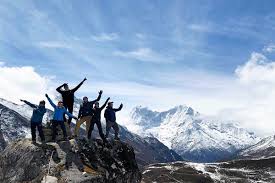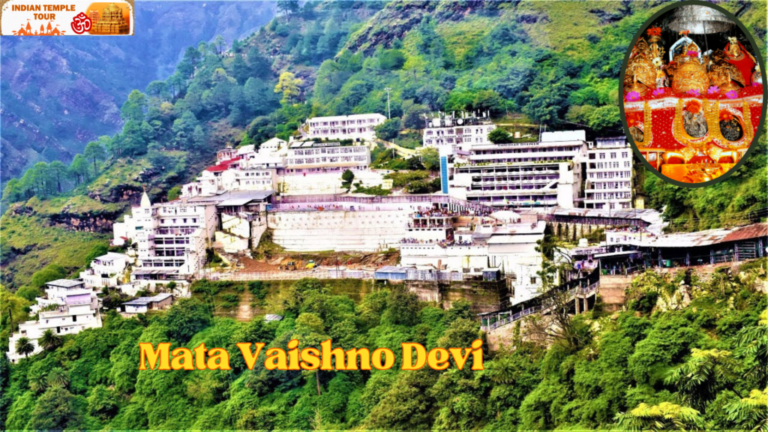Essential Tips for Tackling the Everest Three High Pass Trek
Embarking on the Everest Three High Pass Trek is an exhilarating challenge that demands thorough preparation and careful planning. To ensure a successful and enjoyable adventure, trekkers must consider several essential tips that address the trek’s physical demands, environmental conditions, and logistical requirements.
Firstly, physical preparation is crucial. The Everest three-pass trek’s high-altitude passes—Renjo La, Cho La, and Kongma La—require a high level of fitness. Begin training several months in advance with a focus on cardiovascular conditioning, strength training, and endurance building. Incorporate long hikes with a weighted backpack into your routine to simulate trekking conditions. This preparation helps build the stamina needed for the strenuous days ahead and prepares your body for the challenges of high-altitude trekking.
Acclimatization is another critical aspect. The trek reaches altitudes where oxygen levels are significantly lower, which can lead to altitude sickness. To mitigate this risk, follow a gradual ascent plan and include rest days in your itinerary to allow your body to adjust. Use the “climb high, sleep low” strategy, where you hike to higher altitudes during the day but return to a lower elevation to sleep. Staying hydrated, eating high-energy foods, and avoiding alcohol can also support acclimatization and overall well-being.
Proper gear is essential for handling the diverse and often harsh conditions encountered on the trek. Invest in high-quality, weather-resistant clothing, including layers that can be added or removed based on changing temperatures. Sturdy, waterproof trekking boots are a must, as well as a well-fitting backpack to carry your essentials. A reliable sleeping bag rated for cold temperatures and a trekking pole can also enhance comfort and stability on uneven terrain.
Navigating the rugged and often unpredictable terrain requires careful planning. The trails to the high passes can be covered in snow and ice, making them slippery and treacherous. Pay attention to weather forecasts and be prepared for sudden changes, including snowstorms and high winds. Flexibility in your schedule is important, as weather conditions can impact travel plans and safety. Carrying a detailed map and GPS device can help with navigation and provide peace of mind.
Health and safety should be top priorities. Be aware of the symptoms of altitude sickness, such as headaches, nausea, and dizziness, and know when to seek medical attention. Carry a comprehensive first-aid kit, including medications for altitude sickness, and familiarize yourself with basic first-aid procedures. Trekking with a reputable guide or tour company can provide additional safety and support, as experienced guides can offer valuable assistance in emergencies and help with logistics.
Cultural sensitivity and environmental responsibility are also vital aspects of the trek. Respect local customs and traditions, and engage with the Sherpa communities in a meaningful way. Follow responsible trekking practices, such as minimizing waste, using biodegradable products, and adhering to Leave No Trace principles to preserve the natural beauty of the Himalayas.
By preparing thoroughly, prioritizing acclimatization and safety, investing in quality gear, and respecting the local culture and environment, trekkers can tackle the Everest Three High Pass Trek with confidence and appreciation. This adventure through one of the world’s most spectacular regions offers not only physical challenge but also profound personal growth and unforgettable experiences.
Introduction to the Everest Three High Pass Trek
The 15 Day Trek to Everest Base Camp is a premier adventure for seasoned trekkers seeking to challenge themselves while immersing in the breathtaking beauty of the Himalayas. This trek navigates through three formidable high-altitude passes—Renjo La, Cho La, and Kongma La—each offering its own set of challenges and rewards. Spanning roughly 15 to 20 days, the trek covers diverse terrains, from lush valleys and glacial lakes to rugged mountain paths and snow-capped peaks. Along the way, trekkers experience the stunning vistas of the Everest massif, including Mount Everest, Lhotse, and Makalu. The journey also offers cultural interactions with the Sherpa people, who have long been a part of the region’s trekking history. The combination of physical endurance, high-altitude trekking, and awe-inspiring landscapes makes the Everest Three High Pass Trek a bucket-list adventure for those seeking an unforgettable and transformative experience in one of the world’s most spectacular mountain ranges.
Preparing Physically and Mentally
Preparing for the Everest Three High Pass Trek involves both physical and mental readiness. Physically, trekkers should engage in a comprehensive training regimen that includes cardiovascular exercises, strength training, and endurance-building activities. Incorporate long hikes with a weighted backpack to simulate trekking conditions and build stamina. Training should start several months before the trek to ensure peak fitness levels. Mentally, the trek requires resilience and a positive mindset, as the journey can be grueling and demanding. Mental preparation involves setting realistic goals, visualizing success, and developing coping strategies for managing stress and fatigue. Understanding the challenges of high-altitude trekking and preparing for the psychological aspects of the journey can help trekkers stay motivated and focused throughout the trek, ensuring a more enjoyable and successful experience.
Best Time to Trek: Weather Considerations
Choosing the right time for the Everest Three High Pass Trek is crucial due to the region’s unpredictable weather. The optimal trekking seasons are pre-monsoon (spring) and post-monsoon (autumn). Spring, from late April to early June, offers relatively stable weather and warmer temperatures, making it a favorable time for trekking. The autumn season, from late September to early November, also provides good weather conditions, with clear skies and crisp air. During these periods, the chances of encountering heavy snowfall or extreme cold are lower, which helps in traversing the high passes. However, weather in the Himalayas can be highly variable, and trekkers should be prepared for sudden changes, including snowstorms and high winds. Checking weather forecasts before and during the trek and being flexible with the itinerary can help manage weather-related challenges.
Packing the Right Gear
Packing the right gear is essential for successfully completing the Everest Three High Pass Trek. The gear should be suited for high-altitude trekking and variable weather conditions. Key items include a durable and weather-resistant trekking jacket, thermal base layers, and insulated gloves and hats to protect against cold temperatures. Sturdy, waterproof trekking boots with good ankle support are crucial for navigating rugged terrain and snow. A high-quality sleeping bag rated for cold temperatures and a reliable trekking pole can enhance comfort and stability. Additionally, a well-fitting backpack is necessary to carry essentials. It’s also important to include items such as sunglasses with UV protection, sunscreen, and a first-aid kit. Proper gear ensures safety, comfort, and preparedness for the diverse conditions encountered on this challenging trek.
Essential Supplies for the Journey
Bringing the right supplies is vital for a successful Everest Three High Pass Trek. Essential supplies include high-energy, lightweight foods such as nuts, dried fruits, and energy bars, which provide necessary sustenance and help maintain energy levels during long trekking days. Hydration is crucial, so carry a water bottle and water purification tablets or a filter to ensure access to clean water. Personal items like toiletries, a multi-tool or knife, and a headlamp with extra batteries are also important. Additionally, bring a camera or smartphone with extra memory cards to capture the stunning landscapes. A map, GPS device, and a first-aid kit with medications for altitude sickness are necessary for navigation and health. Ensuring that you have all these essential supplies helps manage the trek’s challenges effectively and enhances the overall trekking experience.
Understanding the Trekking Route
The Everest Base Camp Hike is a challenging journey through some of the most rugged and remote terrains of the Himalayas. The trek covers a distance of approximately 100 kilometers, with each section offering unique landscapes and varying levels of difficulty. The route typically starts from Lukla, where trekkers fly in from Kathmandu and begin their trek towards Namche Bazaar. From Namche, the trail leads to the Gokyo Valley, passing through lush forests and crossing several suspension bridges. The route then ascends to the Gokyo Lakes and eventually to Renjo La, one of the three high passes. After crossing Renjo La, trekkers descend into the Thame Valley before heading towards the Khumbu Glacier and the Cho La Pass. The final high pass, Kongma La, is reached before descending to the Everest Base Camp. Each high pass offers spectacular views and requires careful navigation through rocky paths, snowfields, and challenging ascents. Understanding the route’s layout and key landmarks helps in planning and executing the trek effectively.
Acclimatization Strategies
Acclimatization is crucial for successfully completing the Everest Three High Pass Trek, as the trek reaches altitudes where the oxygen levels are significantly lower. To acclimate effectively, trekkers should follow a gradual ascent plan, allowing time for the body to adjust to higher elevations. Incorporate acclimatization days into the trek, such as resting in Namche Bazaar and Dingboche, where the altitude is lower but still high enough to aid in acclimatization. The “climb high, sleep low” technique is beneficial; it involves trekking to higher altitudes during the day but returning to a lower altitude to sleep. Staying well-hydrated, consuming high-calorie foods, and avoiding alcohol are also important for acclimatization. Be aware of symptoms of altitude sickness and take necessary actions if they occur. Acclimatization strategies are designed to prevent altitude sickness and ensure that trekkers can handle the physical demands of high-altitude trekking.
Navigational Tips and Trail Awareness
Navigating the Everest Three High Pass Trek requires careful attention to trail markers, maps, and weather conditions. The trail is marked by cairns and prayer flags, but weather conditions can sometimes obscure these markers, making navigation challenging. Carrying a detailed map and GPS device is crucial for staying on course. Pay attention to local guides and fellow trekkers for additional navigation tips, as they can provide valuable insights into the trail conditions and route changes. It’s also important to be aware of the terrain, which includes rocky paths, icy sections, and steep ascents. Proper trail awareness involves staying on marked paths to avoid getting lost and being prepared for sudden weather changes that can impact visibility and trail conditions. Regularly checking the route and adjusting plans based on current conditions ensures safe and effective navigation throughout the trek.
Managing Altitude Sickness
Altitude sickness, or acute mountain sickness (AMS), is a common concern during the Everest Three High Pass Trek due to the high elevations. Managing altitude sickness involves recognizing its symptoms early and taking proactive steps to address them. Symptoms include headaches, nausea, dizziness, and fatigue. To prevent altitude sickness, ascend gradually and include acclimatization days in your trek. If symptoms develop, the best course of action is to descend to a lower altitude immediately. Over-the-counter medications such as acetazolamide can help alleviate symptoms, but they should be used in conjunction with other acclimatization measures. Maintaining hydration and eating high-calorie foods can support overall health and reduce the risk of altitude sickness. Awareness of personal limits and listening to your body is crucial. If symptoms persist or worsen, seeking medical assistance from a guide or trekking agency is essential for safety.
Health and Safety Precautions
Health and safety are paramount on the Everest Base Camp Trek, given the challenging conditions and remote location. To ensure safety, trekkers should carry a comprehensive first-aid kit, including medications for altitude sickness, pain relief, and digestive issues. Regularly check weather forecasts and be prepared for sudden changes that can impact trail safety. It’s advisable to trek with a reputable guide or tour company, as experienced guides can provide essential support and manage emergencies. Personal health precautions include maintaining proper hygiene to prevent infections and ensuring adequate hydration and nutrition. Trekkers should also be aware of potential hazards such as avalanches, rockfalls, and extreme weather conditions. Preparing for emergencies by having a contingency plan and knowing the locations of medical facilities in the region can enhance safety. Adhering to these health and safety precautions helps manage risks and ensures a successful trekking experience through the high passes.
Cultural Sensitivity and Respect
Embarking on the Everest Three High Pass Trek provides trekkers with an invaluable opportunity to engage with the local Sherpa communities and experience their rich cultural heritage. Cultural sensitivity is paramount in ensuring that interactions are respectful and mutually beneficial. The Sherpas, who have a deep connection to the region, value their traditions and customs, so it’s important to be aware of local etiquette. Always seek permission before photographing individuals, especially in sacred areas or during religious ceremonies. Dress modestly and remove hats and sunglasses when entering monasteries or traditional homes. Showing respect for local customs and traditions enhances the trekking experience and fosters positive relationships with the community. Engaging with Sherpas in a respectful manner, learning about their customs, and supporting local businesses contribute to a more meaningful and respectful interaction. This approach not only enriches your journey but also helps preserve the cultural integrity of the region.
Staying Hydrated and Nourished
Maintaining proper hydration and nourishment is essential for tackling the Everest Three High Pass Trek, given the physical exertion and high-altitude environment. Dehydration can exacerbate the symptoms of altitude sickness, so trekkers should drink plenty of water throughout the day. Carry a refillable water bottle and use purification tablets or a filter to ensure the water is safe. High-altitude trekking increases caloric needs, so it’s important to consume a balanced diet rich in carbohydrates, proteins, and fats. Pack high-energy snacks like nuts, dried fruits, and energy bars to maintain energy levels. Meals provided on the trek typically include staples like rice, lentils, and vegetables, but supplementing with additional snacks ensures adequate nutrition. Eating regularly and staying hydrated helps sustain physical performance and supports acclimatization, contributing to a more successful and enjoyable trekking experience.
Budgeting for Your Trek
Budgeting effectively for the Everest Three High Pass Trek is crucial to managing costs and ensuring a smooth experience. The total cost of the trek includes several components, such as permits, guide and porter fees, accommodations, food, and flights. Permits, including the TIMS card and Sagarmatha National Park entry fee, are mandatory and should be factored into the budget. Guide and porter fees can vary based on the service provider and level of support required. Accommodations range from basic teahouses to more comfortable lodges, affecting overall expenses. Additional costs include meals, tips for guides and porters, and any personal expenses or optional activities. It’s also wise to budget for unexpected expenses, such as emergency medical costs or changes in plans. Planning ahead and setting aside a contingency fund ensures financial preparedness and helps manage the costs associated with this challenging and rewarding trek.
Tips for Photography on the Trail
Capturing the stunning landscapes and memorable moments of the Everest Three High Pass Trek requires thoughtful photography techniques. Start by ensuring that you have the right equipment, such as a camera with a good zoom lens, extra batteries, and ample memory cards. Early morning and late afternoon light, known as the golden hours, provide the best lighting for dramatic landscapes. Use a tripod to stabilize shots, especially in low-light conditions or when capturing panoramic views. Pay attention to the composition of your photos, including the foreground, mid-ground, and background to create depth and interest. Be mindful of the environment and local customs when photographing people or sacred sites. Respect privacy and seek permission before taking pictures of individuals, particularly in culturally sensitive areas. Capturing the natural beauty of the trek while respecting these practices ensures that your photographs are both stunning and respectful.
Conclusion: Embracing the Challenge
The Everest Three High Pass Trek is a formidable challenge that rewards adventurers with unforgettable experiences and breathtaking views. Embracing the challenge involves thorough preparation, respect for the environment and local culture, and maintaining a positive mindset throughout the journey. The trek tests physical endurance, mental resilience, and adaptability, offering profound personal growth and a deep connection to the Himalayas. Each step taken on this challenging path is a testament to the spirit of adventure and the pursuit of personal achievement. Celebrating the journey involves reflecting on the trials overcome, the beauty witnessed, and the cultural encounters experienced. By embracing the challenge with determination and respect, trekkers not only achieve a significant milestone but also gain a lasting appreciation for one of the world’s most remarkable trekking experiences.







